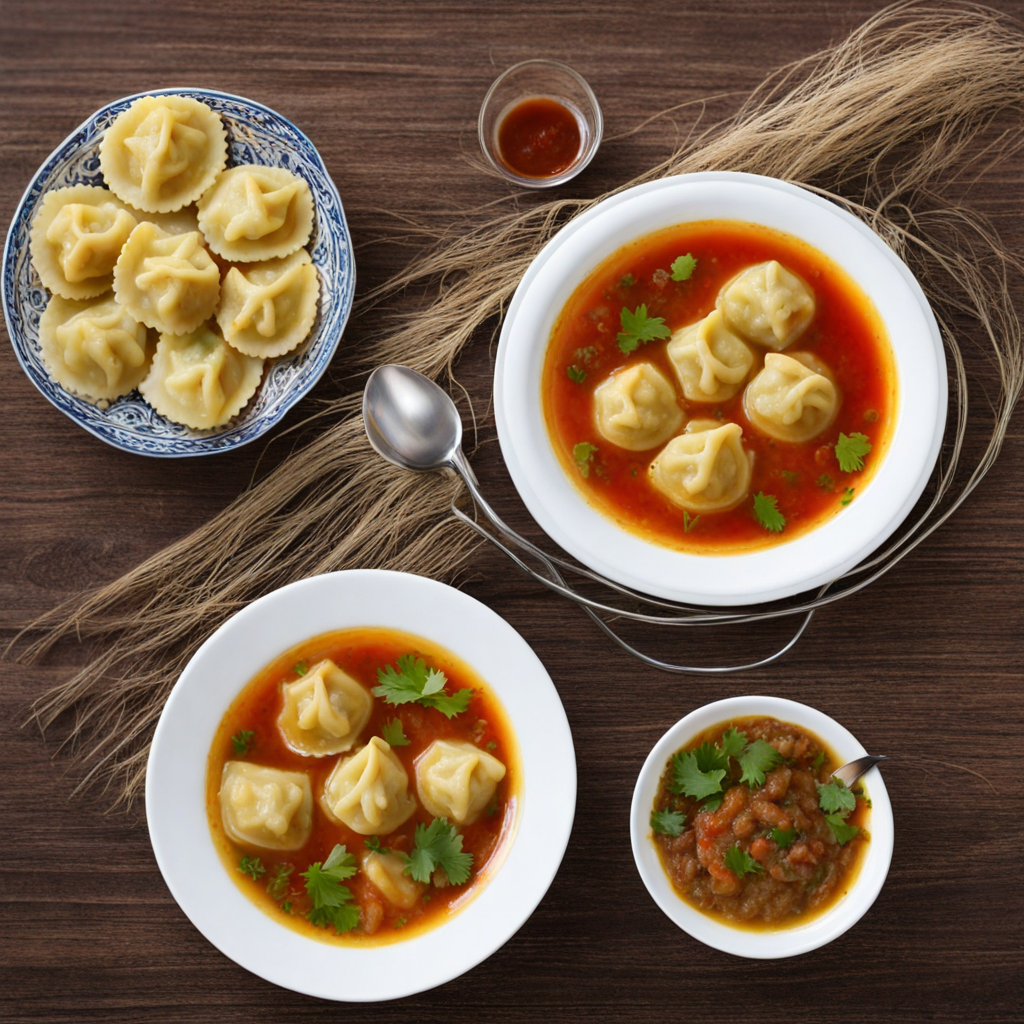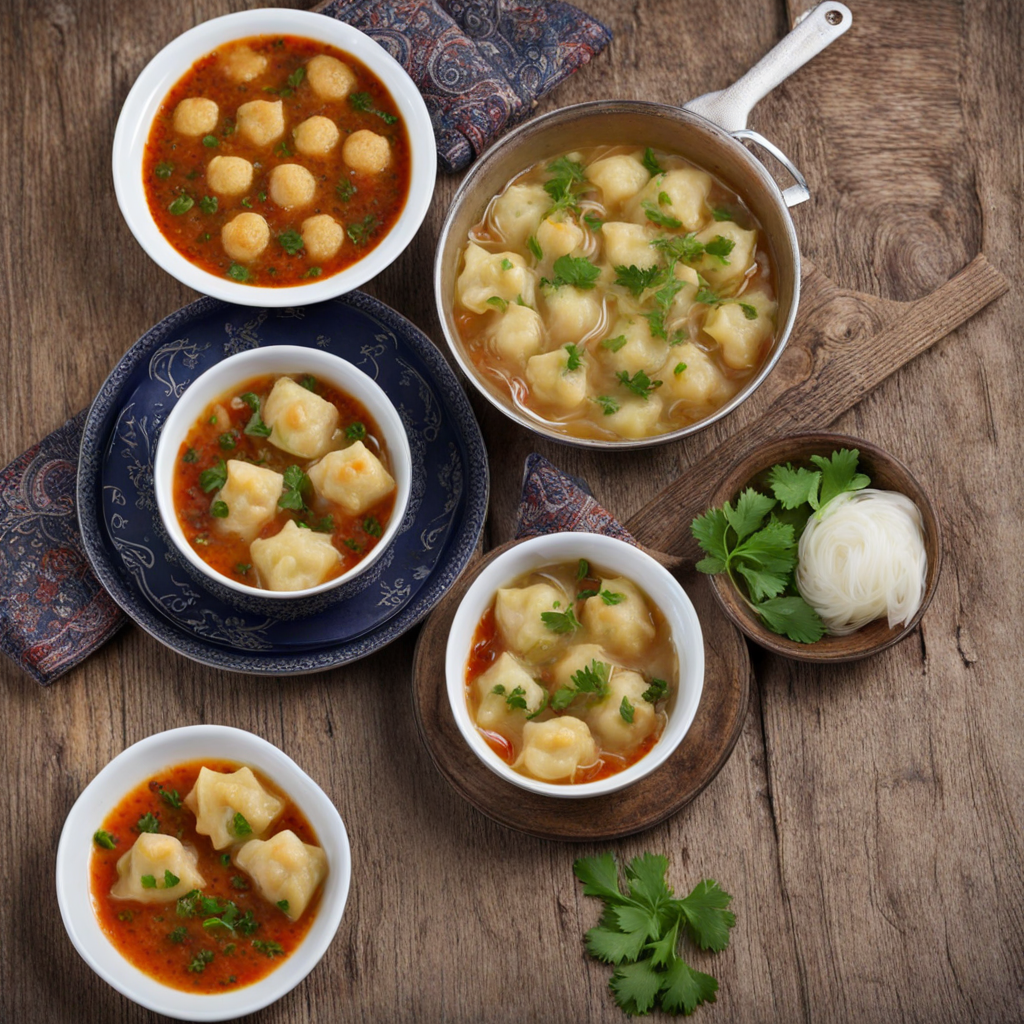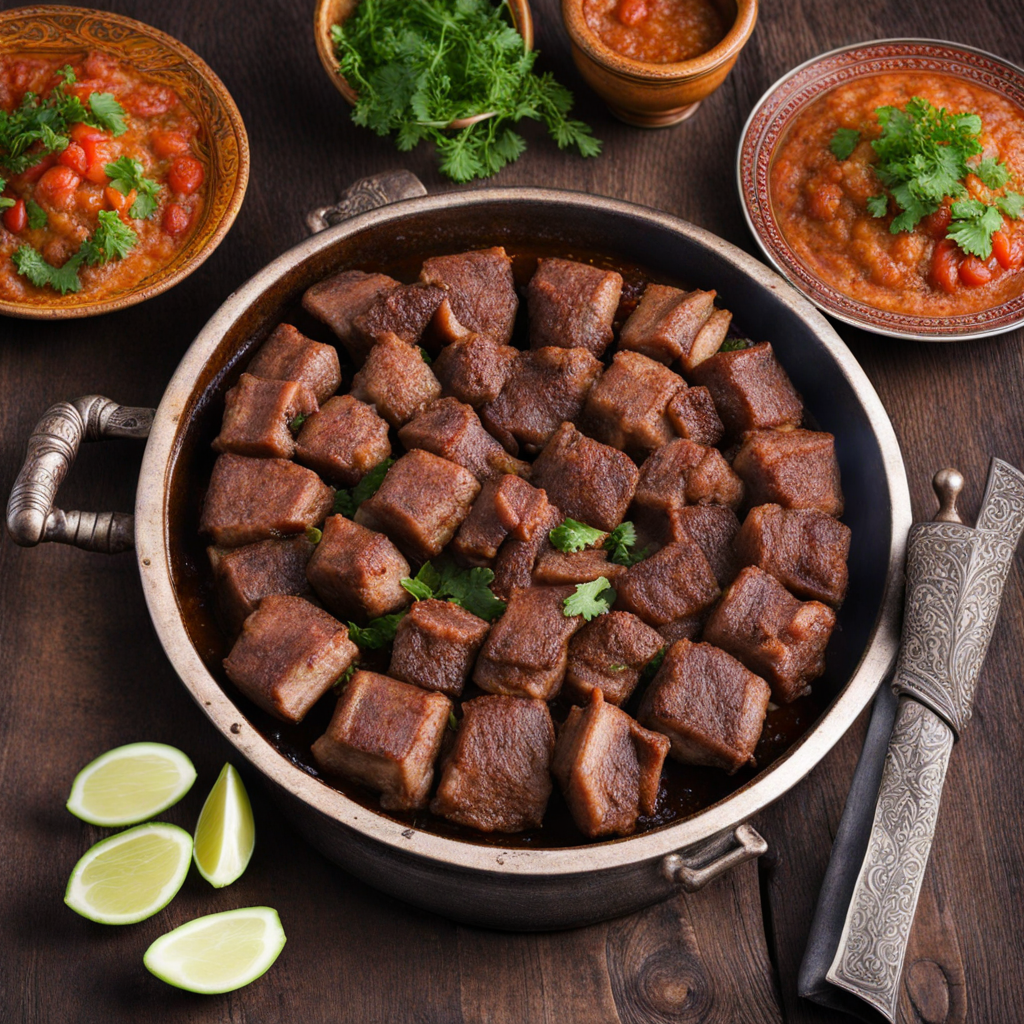Chuchvara
Chuchvara is a delightful Uzbek dish that showcases the country's rich culinary heritage through its exquisite flavors and textures. These small dumplings, similar to Russian pelmeni or Chinese jiaozi, are filled with a savory mixture of minced meat, typically lamb or beef, combined with finely chopped onions and a blend of spices. The dough is made from simple ingredients like flour, water, and salt, rolled out thinly to encase the flavorful filling. The result is a tender, slightly chewy exterior that perfectly complements the juicy, aromatic interior, making each bite an irresistible experience. Traditionally, Chuchvara is served in a broth, enhancing its comforting qualities. The broth is often made from simmered meat bones, which adds depth and richness to the dish. Some variations may also include a tangy yogurt or sour cream on the side, providing a refreshing contrast to the rich flavors of the dumplings. Garnished with fresh herbs or a sprinkle of chili powder, Chuchvara can be enjoyed either as a hearty main course or a delightful appetizer, appealing to both meat lovers and those exploring new culinary horizons. What makes Chuchvara truly special is not just its taste, but the experience of enjoying it with family and friends. In Uzbekistan, making these dumplings is often a communal activity, bringing people together to share stories and laughter while they fold the dumplings by hand. This aspect of preparation adds to the dish's charm, making it a symbol of hospitality and togetherness. For anyone seeking to explore new culinary landscapes, Chuchvara offers a delectable taste of Uzbekistan's rich cultural tapestry, promising a memorable dining experience filled with warmth and flavor.
How It Became This Dish
The History of Чучвара: A Culinary Jewel of Uzbekistan Origin and Etymology The story of Чучвара (Chuchvara) begins in the heart of Central Asia, where the rich tapestry of culture, history, and geography has influenced its culinary traditions. The name "Chuchvara" is believed to derive from the Persian word "چچور" (chechur), which refers to small dumplings. This etymology reflects the deep-rooted connections between the peoples of the region, including Uzbeks, Persians, and Turkic tribes, who have all contributed to the evolution of this delightful dish. Chuchvara is a type of dumpling, akin to the more widely known manti or pelmeni, that showcases the culinary techniques passed down through generations. Its origins can be traced back to the nomadic tribes of the steppes, where portable food was essential for survival. These dumplings were a convenient way to carry meat and vegetables, allowing nomads to sustain themselves on long journeys. Cultural Significance Chuchvara is more than just a dish; it is a symbol of hospitality and communal living in Uzbekistan. Traditionally, it is served during family gatherings, celebrations, and special occasions, reflecting the importance of food in fostering relationships and cultural identity. Making Chuchvara is often a communal activity, where families gather to prepare the dumplings together, reinforcing social bonds and preserving culinary traditions. In Uzbek culture, the act of sharing food is deeply ingrained. It is customary to serve Chuchvara to guests, often accompanied by broth or a tangy vinegar-based sauce. This practice not only showcases the host's generosity but also emphasizes the communal nature of dining. The dish is often accompanied by stories and laughter, connecting generations through shared experiences. The Recipe: Ingredients and Preparation The base of Chuchvara consists of a simple dough made from flour, water, and salt, rolled out thinly and cut into small squares. The filling typically includes finely minced meat (commonly lamb or beef), onions, and a blend of spices. Some variations introduce vegetables such as potatoes or pumpkin, catering to different palates and dietary preferences. The preparation of Chuchvara is an art form in itself. The filling is placed in the center of each dough square, which is then carefully folded and sealed, often with intricate pinches and folds that reflect the skill of the cook. The dumplings are then boiled or steamed, resulting in a tender exterior that encases the flavorful filling. A distinctive feature of Chuchvara is its serving style. It is typically presented in a rich, aromatic broth, garnished with fresh herbs like dill or coriander. Some prefer to serve it dry, accompanied by a spicy sauce made from vinegar, garlic, and chili, adding a zesty kick to the dish. Historical Development and Regional Variations The history of Chuchvara is intertwined with the broader narrative of Uzbek cuisine, influenced by the region's diverse cultural interactions. The Silk Road, which passed through Uzbekistan, facilitated the exchange of culinary ideas, ingredients, and techniques. As traders and travelers from different cultures converged, they brought their own culinary traditions, which were adapted and integrated into local practices. Over time, regional variations of Chuchvara emerged, each reflecting local ingredients and culinary preferences. In the Samarkand region, for example, Chuchvara may be larger and stuffed with a mixture of meat and herbs, while in the Ferghana Valley, they might be smaller and more delicately seasoned. The introduction of spices from the Indian subcontinent and the Middle East further enriched the flavor profiles of Chuchvara, making it a versatile dish that caters to diverse tastes. Modern Interpretations and Global Influence In contemporary Uzbekistan, Chuchvara remains a beloved staple, celebrated in restaurants and homes alike. As globalization has expanded culinary horizons, Uzbek cuisine, including Chuchvara, has gained recognition beyond its borders. Chefs worldwide are experimenting with traditional recipes, offering innovative twists on this classic dish. The rise of social media has also played a crucial role in popularizing Chuchvara. Food bloggers and influencers showcase their culinary creations, sharing the intricate process of making these dumplings. This has led to a resurgence of interest in traditional Uzbek cuisine, inspiring a new generation to explore their culinary heritage. In addition, Chuchvara has found its way into fusion cuisine, where chefs blend it with elements from other culinary traditions. For instance, some restaurants serve Chuchvara with Asian-inspired sauces or incorporate it into fusion-style bowls, merging flavors from different cultures while still honoring the essence of the original dish. Conclusion: A Culinary Legacy The journey of Chuchvara from its nomadic roots to a cherished symbol of Uzbek hospitality highlights the profound connection between food, culture, and identity. As a dish that embodies the spirit of communal living and tradition, Chuchvara continues to be a source of pride for the Uzbek people. It serves as a reminder of their rich culinary history, shaped by centuries of cultural exchange and adaptation. Today, whether enjoyed in a bustling Tashkent market or a cozy family gathering, Chuchvara stands as a testament to the resilience of culinary traditions in the face of modernity. It invites everyone to partake in its delicious legacy, offering a taste of Uzbekistan's rich cultural heritage and a glimpse into the warmth of its communal spirit. In every bite of Chuchvara, one can savor not just the flavors but the stories, memories, and connections that have shaped this beloved dish over countless generations.
You may like
Discover local flavors from Uzbekistan







